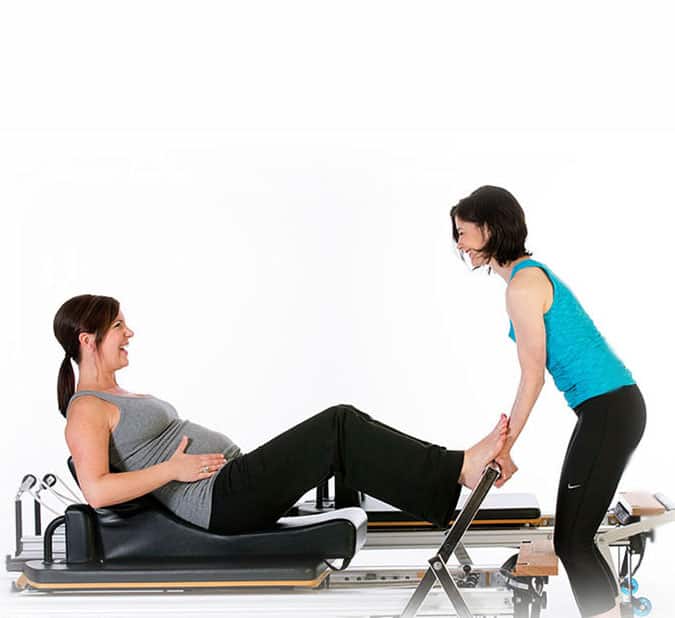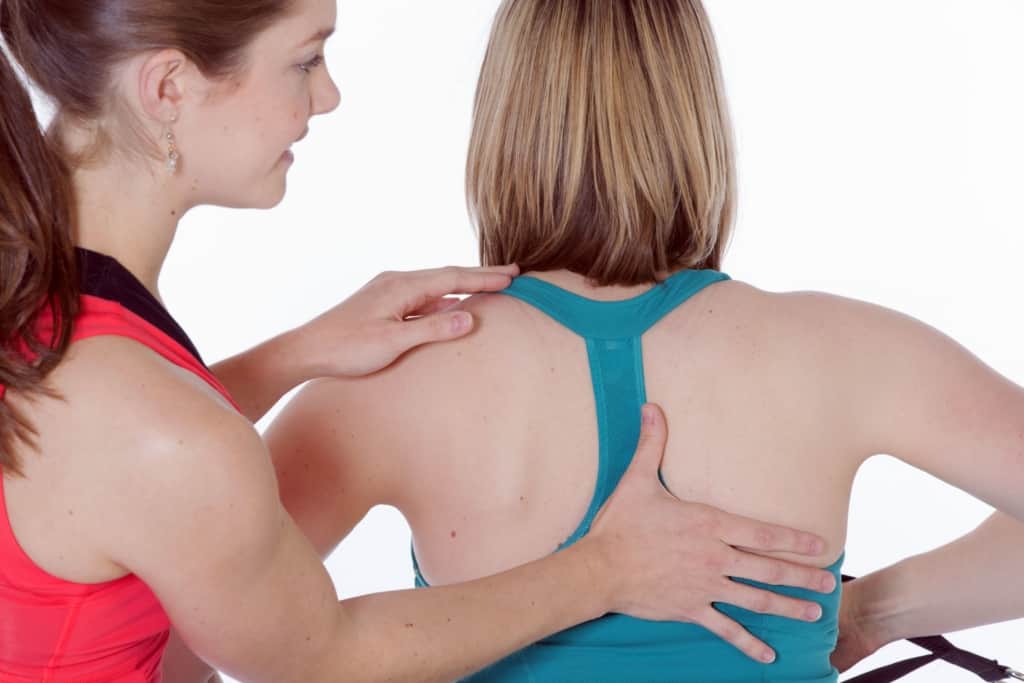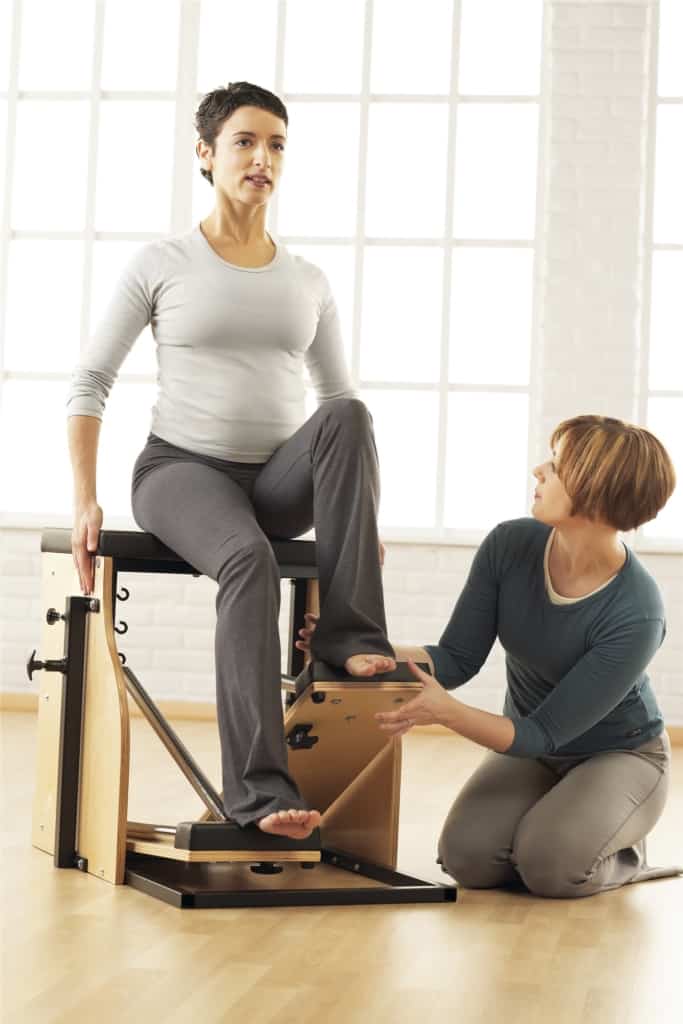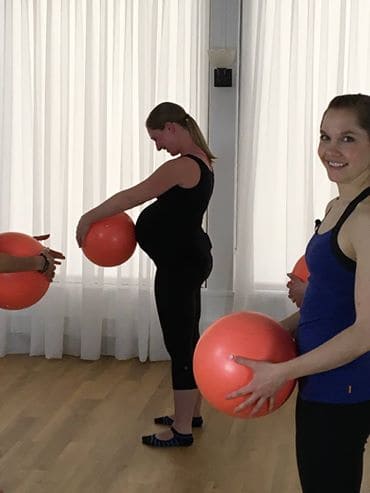The American Congress of Obstetricians and Gynecologists (ACOG) and IDEA Health & Fitness—the world’s largest association for health and fitness professionals—encourage regular exercise during pregnancy to:
- improve energy
- strengthen muscles
- help control weight
- build and maintain strong bones
- improve sleep
- improve mood, body image and reduce postpartum depression
Certified, experienced Pilates professionals—specifically, Pacific NW Pilates instructors—are poised to teach moms-to-be, following exercise guidelines offered by both organizations. It is important that Pilates teachers are familiar with how a woman’s body changes during pregnancy, and how to safely modify exercises for expectant clients.
Prenatal Pilates Exercise Guidelines for Instructors

Pre-pregnancy
Labor, delivery and early motherhood is highly physical and demanding. The average delivery lasts 12 hours—with some rest periods—and requires strength and endurance. At home, a new mother needs upper body strength to carry her infant, lift awkward carriers and push strollers. Preparing intentionally for pregnancy and the physical challenges of caring for a newborn may minimize the risk of injury during recovery.
Don’t underestimate the value of training for pregnancy.
- Work on core and upper body strength and endurance
- Improve mobility and strength of adductors, hamstrings and gluteals

The first trimester (0 – 12 weeks)
During the first trimester, hormonal changes—increases in progesterone, estrogen and relaxin—make collagen more pliable. A surge of hormones prepares the mother’s pelvis for delivery; those hormones can also make joints and ligaments lax and unstable.
Do:
- Obtain permission to exercise from the client’s physician
- Focus on good core stability
- Pay attention to excellent posture
Don’t hold stretches.

The second trimester (13 – 26 weeks)
During the second trimester the pelvis becomes more mobile and the center of gravity is altered. The growing uterus may compress the vena cava in supine (lying on back) positions.
Do:
- Work in neutral anatomical alignment
- Focus on shoulder stability
- Encourage natural breathing patterns
Don’t use supine, prone or inverted exercises.

The third trimester (27 – 40 weeks)
During the final phase of pregnancy, the mother may become short of breath when exercising. Ankle swelling (edema) may occur.
Do:
- Keep ankles mobile to help with circulation
- Change positions frequently
- Incorporate squats to prepare for pregnancy
Don’t use supine, prone or inverted exercises.

The benefits of prenatal Pilates exercises are many. The best result of careful, professionally supervised exercise during pregnancy is feeling confident and strong to really enjoy that precious new baby.
Like this blog?
Here are some others you may enjoy from Pacific Northwest Pilates:
What’s Your Pilates Reset Exercise?
Pacific Northwest Pilates is studio, school and fitness family under one roof. Click to learn more about our education courses and workshops, private studio sessions and virtual and in-studio group classes. Or call for details: (503) 292-4409.

